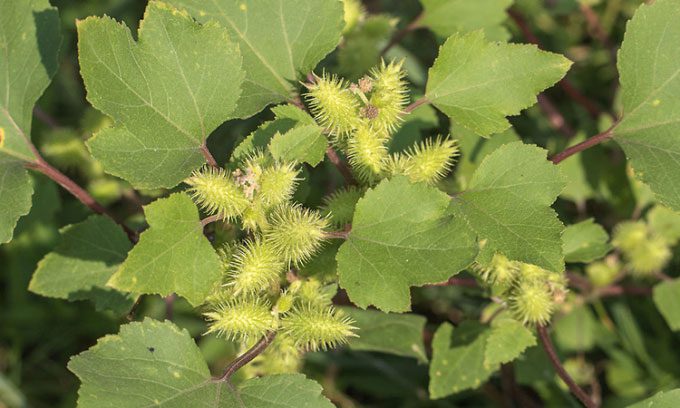A new study by South Korean scientists reveals that plants in the Xanthium genus contain antioxidant and anti-inflammatory components that may help protect the skin.
Commonly found in roadside ditches and riverbanks, Xanthium originates from Southern Europe, Central Asia, and China, but has spread worldwide. Its spiny fruits are encased in a hard shell and have been used in traditional medicine to treat headaches, nasal congestion, skin pigmentation disorders, rheumatoid arthritis, and various other ailments.

Common Cocklebur (Xanthium strumarium). (Photo: Jivko Nakev)
However, the new research presented at Discover BMB, the annual meeting of the American Society for Biochemistry and Molecular Biology held from March 25 to March 28 in Seattle, is the first to investigate the wound healing, skin-protective, and anti-aging properties of Xanthium fruit.
Through a series of laboratory tests, scientists from Myongji University in South Korea discovered that compounds in Xanthium fruit can reduce damage caused by ultraviolet exposure, accelerate wound healing, and influence collagen production—a protein that helps skin elasticity and prevents the appearance of wrinkles.
“In this regard, it could be an attractive ingredient for skincare creams or other cosmetics,” said PhD candidate Eunsu Song at Myongji University.
Comparing the biological activity of Xanthium fruit grown in different locations, the research team found that fruits grown in South Korea exhibited slightly higher antioxidant and anti-inflammatory properties, as well as better healing activity compared to those from China.
Nevertheless, Eunsu cautioned that high doses of extracts from Xanthium fruit can be dangerous. The outer shell contains a component called carboxyatractyloside, which can be harmful to the liver. Therefore, finding the appropriate concentration is crucial and will be key to commercialization in the cosmetics industry.
In the future, scientists plan to further investigate the underlying biological mechanisms and conduct animal experiments to explore safe extraction methods for Xanthium fruit.




















































